A Gorgeous Glance Of Gujarat: 5 Tourist Spots To Include

Ever since Amitabh Bachchan recited the line “Kuch din toh gujaro Gujarat mein,” it had an effect on us to want to explore Gujarat at least once.
Gujarat, located on the western coast of India has been a promising state in the peaceful struggle of India’s independence. It has been the home of Mahatma Gandhi, whose movements inspired to gain freedom, and of Vallabhbhai Patel, the father of the Republic of India.
Apart from independence, Gujarat has also been home to many writers and poets, and it also has an important landmark in the Gujarati literature followed by art, architecture, tempting cuisine, soothing music, a diverse range of festivals, culture, films and much more.
So are you ready to visit the religious sites on the hilltops, shop in the narrow streets and savor some local food? If yes then join me, because we are going on a treasure hunt to find some of the hidden and glorious gems of Gujarat.
Heritage Walk, Ahmedabad
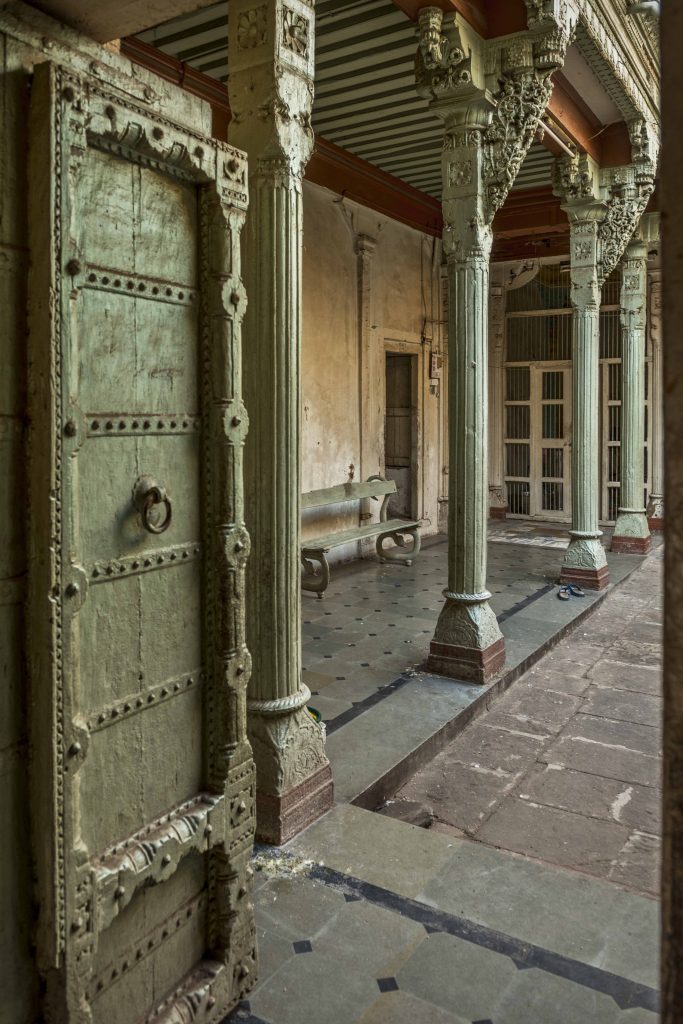
Take a trip down the narrow alleys and experience the prestige of Ahmedabad and it’s rich heritage. Explore the unique Indo-Islamic monuments, the varied patterns of the Hindu and Jain temples along with the intricately carved wooden houses in the old city of Ahmedabad often called as the “Pol”. These “Pols” are usually housing neighborhoods sheltering people of all caste and religion. They capture the perfect vintage aesthetic, thereby gaining a place in UNESCO’s World Heritage Site.
One can enjoy the beauty of Ahmedabad’s old city by taking a walk down the rich cultural heritage. You might be wondering about what’s a Heritage Walk? Well, the Heritage Walk in Ahmedabad is supported by the Ahmedabad Municipal Corporation reminding everyone about the charm of the city.
MODE OF TRANSPORT
By road: Various rental cars and buses are available in and around Gujarat.
Duration: Approximately 8 hrs by car and 10 hrs by bus.
By train: Board the Bhuj Express from Mumbai.
Duration: Approximately 8 hrs.
By air: Various flights are available from Mumbai to Bhuj.
Duration: Approximately 1 hr.
The Heritage Walk is organized in a particular manner which is as follows :
MORNING HERITAGE WALK
Starting point: Swaminarayan Temple, Kalupur.
Ending point: Jama Masjid.
Time: 7:45 AM for slide show followed by the walk at 8:00 AM.
Duration: 2 hrs 30 min, thereby covering a total of 20 points between the Mandir and Masjid.
Entry fee: INR 60 per person for Indian citizens. INR 120 per person for Foreign citizens.
Entry fee is inclusive of all taxes.
EVENING HERITAGE WALK
Starting point: Sidi Saiyyed Mosque.
Ending point: Manek Chowk.
Time: 8:45 PM for the slide show followed by the walk at 9:00 PM.
Duration: 2 hrs 30 min.
Entry fee: INR 200 per person for Indian citizens. INR 300 per person for Foreign citizens.
Entry fee is inclusive of all taxes.
Cancellation and refund policy: No refund once the booking has been made.
In conclusion, the main motto of this heritage walk is to preserve the old heritage giving the city its own pride.
The Great Rann of Kutch
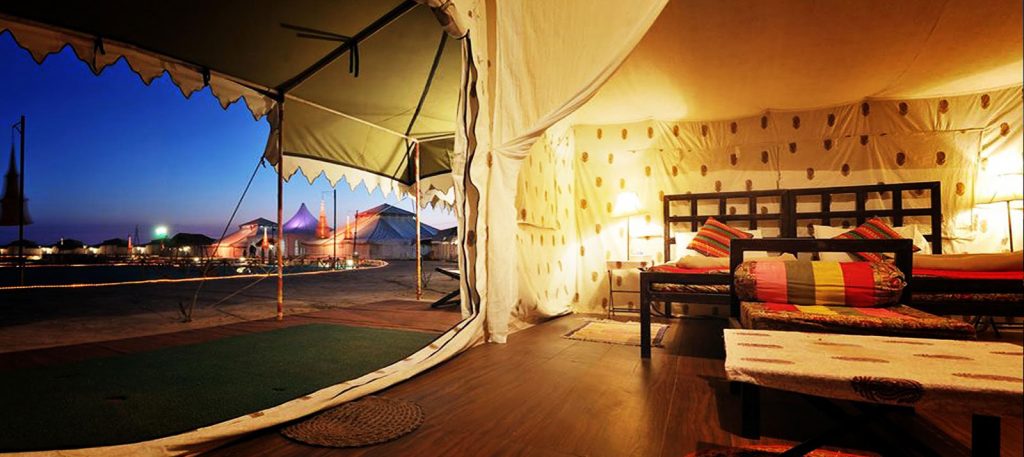
Being located in the Kutch district of Gujarat and being distributed over an area of 7500 sq km, the Great Rann of Kutch is one of the largest salt deserts in the world and is inhabited by a local group of inhabitants called the Kutchi people. The arid desert expands up to the Gulf of Kutch and mouths the River Indus in southern Pakistan.
Every year the Government of Gujarat hosts the famous Rann Utsav festival where tourists from all over the world come and enjoy the various sights of the Rann. The moonlight reflecting on the white salty desert gives the visitors of Rann Utsav an immense joy thereby letting them experience a paradise on earth, accompanied by the delicious cuisine, amazing culture and hospitality by the locals.
MODE OF TRANSPORT
By road: Various bikes, cars and buses are available in and around Gujarat.
By train: Board the Kutch Express from Mumbai.
Duration: Approximately 15 hrs.
By air: Various flights are available from Mumbai to Bhuj.
Best time to visit: November – February.
MODE OF ACCOMMODATION
Where to stay: Best accommodation to choose from is the Gateway to Rann Resort in Dhordo which is up north of Bhuj. The resort has been characterized by Kutchi bhungas (mud huts), which are beautifully crafted and decorated with several handicrafts.
Rates: The rates start from INR 4,000-5,000 per night (inclusive of all taxes) for a double air-conditioned room with an attached bathroom, with the inclusion of meals and running water.
Hot water is provided separately as per the requirement.
Shree Somnath Jyotirling Temple
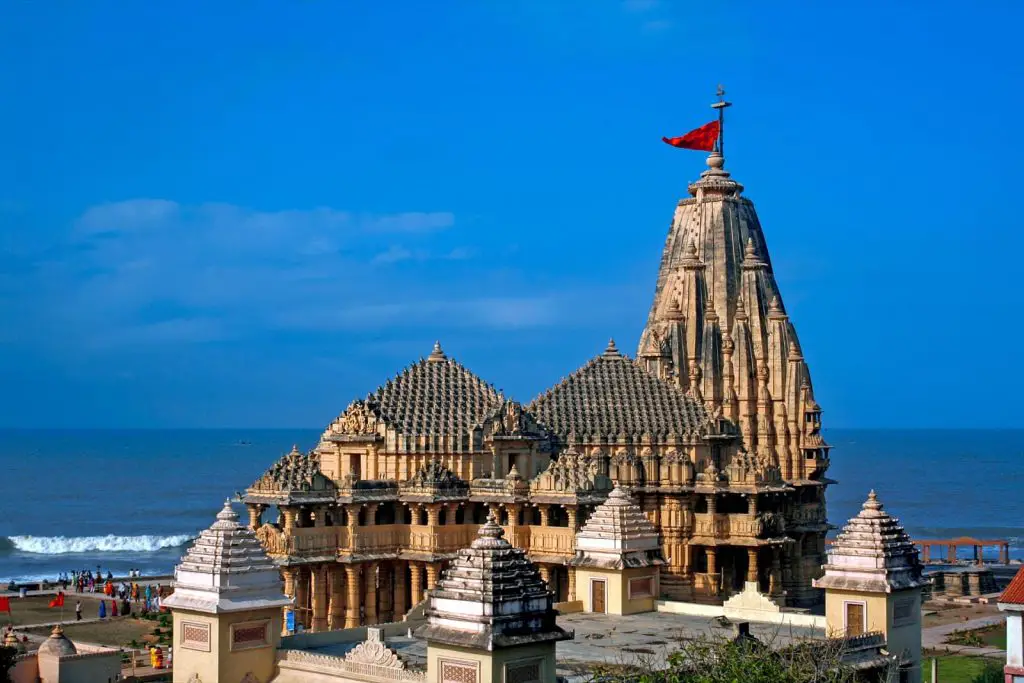
Located on the western coast, the Somnath Temple is believed to be the first among the twelve Jyotirling shrines of Lord Shiva. The Somnath Temple is one of the most important tourist destination and pilgrimage of Gujarat.
The word Somnath means “Lord of the Soma”, an epithet of Lord Shiva and the temple is considered to be holy and sacred. The Jyotirling too are considered supreme and are believed as Lord Shiva appearing as the fiery column of light.
MODE OF TRANSPORT
By road: There is no direct bus from Mumbai to Somnath. You can board a flight from Mumbai to Ahmedabad and then take a bus from Ahmedabad to Somnath.
Duration: Approximately 14 hrs.
By train: There is no direct train from Mumbai to Somnath. You can board a flight from Mumbai to Rajkot and then take the Okha Somnath Express from Rajkot to Somnath.
Duration😛 Approximately 13 hrs.
By air: There is no direct flight from Mumbai to Somnath. You can board a flight from Mumbai to Rajkot and then take an Indica from Rajkot to Somnath.
Duration: Approximately 6 hrs.
Best time to visit: Between October to March for comfortable and convenient sightseeing.
Temple visiting hours: All days of the week from 5:00 AM to 9:00 PM.
Entry fee: No entry fee.
Gir National Park
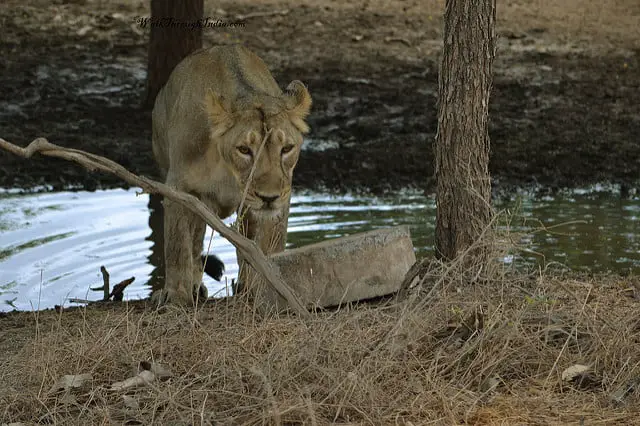
The Gir National Park has been habitat to overly 2,375 species which includes about 38 species of mammals, 300 species of birds, 37 species of reptiles and home to around 2,000 species of insects.
The Flora and fauna of the national park :
HERBIVORES: The herbivore group mainly comprises of Chowsingha – the four-horned antelope, other species of deer’s like the chital, sambar and chinkara along with wild boar and nilgai. Several blackbucks too are seen surrounding the sanctuary along with small mammals like porcupine, hare and pangolin which are quite rare.
CARNIVORES: The dry and deciduous habitat of Gir forest is often suitable for carnivores such as the Asiatic lions (523) and Indian leopards (300) as per the 2015 statistics. Along with these, the forest is also known for the jungle cat, striped hyena, golden jackal, Indian mongoose and other small desert inhabitants such as the desert cat which is rarely seen.
REPTILES AND AMPHIBIANS: The Gir forest has also been favored by numerous reptiles and amphibians like the Marsh crocodile which are spotted in a large number along with tortoise, monitor lizard and a few species of snakes like the Indian cobra, python etc.
BIRDS: The exotic flora of the Gir National Park has been home to more than 300 species of birds. The typical species include the crested serpent eagle, brown fish owl, rock-bush quail, black-headed oriole, Indian peafowl, crested treeswift and scavenger hunt birds like vultures with 6 species each.
MODE OF TRANSPORT
By road: Board a flight from Mumbai to Diu, then book/take private cabs or bus transport services from Diu to Sasan.
Duration: Approximately 2 hrs road distance from Diu to Sasan.
By train: Nearest railhead is Rajkot railway station.
Duration: Approximately 165 km from Gir National Park to Rajkot.
By air: Nearest airport from Gir National Park is Keshod and the other is Rajkot.
Duration: Approximately 70 km from Gir to Keshod and approximately 160 km from Gir to Rajkot.
Rani ki Vav, Patan
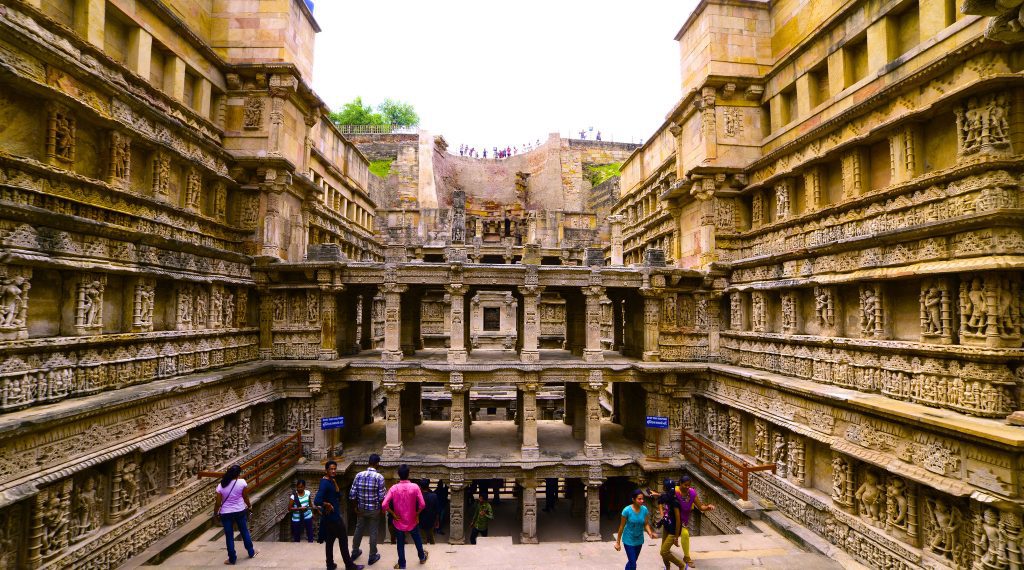
Rani Ki Vav or commonly known as The Queen’s Stepwell is located on the banks of river Saraswati and it was initially built up as a memorial to King Bhima 1 in the 11th century AD by Queen Udayamati, the beloved wife of King Bhima. The craftsmanship of this multi-story building dates back to the Maru-Gurjara architectural style reflecting the artistic design and complex beauty of the historical heritage.
Rani Ki Vav is an example of a distinctive form of subterranean water architecture of the Indian subcontinent and it has been constructed since the third millennium BC. It is a single component, inverted temple style water management system which is divided into seven level stairs that hold up to 500 sculpted panels each of high definition and high artistic quality.
This elegant stepwell is also one of UNESCO’s World Heritage Site and has bagged the title of “Cleanest Iconic Place” in India at the Indian Sanitation Conference (INDOSAN) respectively.
MODE OF TRANSPORT
By road: Several buses and rental vehicles are available to reach Patan from Ahmedabad.
Duration: 127 km away from Ahmedabad city.
By train: Nearest railhead available is Mehsana.
Duration: 55 km or approximately 1 hr 10 min. away from Ahmedabad city.
By air: Sardar Vallabhbhai Patel Airport.
Duration: 123 km away from Ahmedabad city.
Best time to visit: Between October and March when the weather is quite pleasant.
Entry fee: INR 5 per person for Indian citizen. INR 100 per person for Foreign citizen.
Entry fee is inclusive of all taxes.
Read also: Travel The World One Cup of Coffee At A Time



